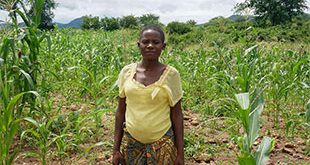
By Ronald Musoke
When Uwezo education survey statistics tell half the story
Only 16% of pupils in Primary level three can pass a test of Primary Two level in Kenya, Uganda, and Tanzania. By Primary Seven level, 20% of pupils still cannot pass the Primary Two level test. Most of those who fail are from Uganda.
Those are some of the highlights in the Uwezo Learning Assessment Survey 2013. Uwezo, an NGO dedicated to improving literacy and numeracy among school-age children between 6 and 16 years through creating social situation awareness, has published the reports since 2009.
Data on learning outcomes, school conditions, and homes of the children is collected in selected districts. The Uwezo surveys are “citizen-led household based assessments” meaning that they are conducted at home not school and directed at the citizens.

The idea is to gather information that can be used to monitor national and regional performance trends, and allow comparisons between countries.
The latest report entitled, “Are Our Children Learning; Literacy and Numeracy Across East Africa 2013,” is the third in the series.
As has become routine in comparisons of Uganda, Kenya, and Tanzania on various statistics indices, the Uwezo findings have become controversial and sparked debate.
The same happened when, in 2010, the UN Population Fund released a report on labour productivity in the region that claimed “six Ugandans are needed to do the job done by one Kenyan.” The same job, the report noted, would require four Tanzanians.
It happened again in 2013, when a Uganda Service Delivery Indicators (SDI) report by the World Bank noted that “Ugandan doctors perform at the same level as Kenyan nurses”. In that report, the Tanzanian health service providers performed slightly lower than Ugandans.
When The Independent asked what surveys like the SDI attempt to do, Ritva Reinikka, the World Bank’s director for Human Resource Development for African Region, explained their complex aim.
“It is an effort to measure the immeasurable,” she said in November 2013.
She explained that SDIs attempt “to get into the quality issues on the supply side of services from the citizens’ perspective”.
On education in Uganda, she noted: “We see often that primary six children are unable to read primary two paragraphs; this is quite astonishing and it indicates that pupils are not learning at school”.
The Uwezo report arrives at the same conclusion.
The Uwezo report says “demonstrable learning outcomes for millions of children going to school are invisible across East Africa”.
This is a sample story that Uwezo found 11% of children in Primary 7—the final year of primary education in Uganda— cannot read.
“My name is Agaba. I have a friend. She is called Akello. Today my mother took us to school. She drove us in her car. It was very early in the morning. We were the first children to reach the school.”
The Uwezo administered tests are not identical but equivalent in Uganda, Kenya, and Tanzania based on the “curriculum expectations” of each country. In Kenya, 8% of P7 children could not read an equivalent story. Tanzania performed worst in the English test, with 48% of the pupils in P.7 failing to read the P.2 story. But then English is not the language of instruction in Tanzania; Swahili is. When Uwezo gave Tanzanian pupils the Swahili reading test, only 24% failed it.
In math, or numeracy as the survey calls it, Tanzania performed best with 89% passing, Kenya followed with 85%, and Uganda was next at 84%.
Additionally, for the 2013 report, perhaps responding to the “thematic curriculum” introduced by the government in 2007, the Uwezo survey in a few districts administered some tests in local languages – Ateso, Luganda, Lunyoro-Rutoro, and Leblango.
The researchers report that such peculiarities could create some “noise or non-sample error into the data”. They add that “to aid comparability across countries, only equivalent questions across surveys are included in the literacy and numeracy results”. In the end, the researchers say, the principle findings they report are not undermined. But is this really the case?
Good news for Uganda
Considering the results from the different rounds of surveys, Uwezo says there is little evidence of large changes in learning outcomes.
Uganda and Tanzania, however, have some good news.
“In Uganda, we find a moderate improvement in literacy skills but a moderate decline in numeracy skills,” the report notes.
According to the report, Ugandan scores for English have improved from 32% in the first round to 46% in the third. That is an improvement, based on the survey results, of about 43%. The numeracy scores, meanwhile, have dropped from 51% to 44%. That is a 15% drop. The combined score shows a 30% improvement. But such statistics tell only half the story.
Tanzania has some improvement in numeracy skills. But the learning outcomes in Kenya have remained extremely stable.
In Uganda’s case, the literacy rates are very poor at P.1 to P.4, the classes where the thematic curriculum that emphasizes learning local languages of the districts. By P.4, only 16% of pupils passed the test. The pass rate for Kenya at the same level was 42% and Tanzania 36%. At P.3 levels, the pass rate for Uganda was 5% for Uganda, for Tanzania 20%, and 22% for Kenya. At P.2 level, the pass rate is at 2% for Uganda, 9% for Kenya, and 8% for Kenya.
Learning spoilers
The statistics appear to show that from P.1 to P.4, Uganda pupils learn very little compared to their regional counterparts. However, Uganda pupils recover quite dramatically from P.5 to P.7. As a result, at P.7 level, the combined pass grades for both literacy and numeracy are Kenya 84% passed, Uganda 82%, and 75% for Tanzania. Why is this?
Ritva Reinikka, the World Bank’s director, noted three major possible causes of poor performance in Uganda: teacher absenteeism, teachers lacking teaching skills, and pupils lacking text books.
“Most teachers recruited lacked teaching skills,” Reinikka told The Independent months before the Uwezo report was released, “What surprised me was 90% of the schools had no text books (in both private and public) as opposed to other countries.”
She added: “Teacher absentee rates have not changed in the last 10 years. Uganda was one of the first countries in the world to measure teacher absence rate, so having these numbers up is not good. We found out that most teachers were not mastering the curriculum they teach especially the one for mathematics.”
The Uwezo report makes similar conclusions. The report says that approximately 11% of teachers are absent in Kenya and Uganda, while around 18% are absent in Tanzania.
“In absolute terms, this implies that an average of 13% of teachers are absent from primary school in the region.”
The researchers say: “We need to figure out what it will take to get teachers to come to school every day and teach well, so that we do not waste children’s time and dash their aspirations.
“We need creative, evidence based ideas on what works to drive our policy agenda, and sharp political economy analysis and action to get the execution right.”
Impact of poverty
The Uwezo report also points at another reason for poor performance of Uganda pupils in school; poverty.
To further compare the literacy and numeracy skills within countries, the Uwezo survey, compares the children based on social-economic backgrounds. It categorizes them into three socio-economic groups; ultra-poor, poor, and non-poor, according to durable assets owned, access to electricity and/or clean water, and mother’s formal education level.
The report says the likelihood of a child from a rich home passing both the literacy and numeracy tests is approximately double that of a child from an ultra-poor households. The gap between poor and ultra-poor households is the same in Kenya and Tanzania (28 percentage points), but is lower in Uganda (21 percentage points).
Understanding the impact of poverty on school learning outcomes is critical because, in GDP terms, Ugandans are poorer than Kenyans and Tanzanians. In 2012, Kenya’s GDP of US$41 billion was twice Uganda’s US$20 billion. Tanzania’s GDP was US$28 billion. Crudely speaking, therefore, there are more poor and ultra-poor households in Uganda.
A different report entitled ‘Out of School Children Uganda,’ released recently by the education ministry in conjunction with Stromme Foundation, UNICEF, UNHCR, Save the Children and Eriks Development Partners cited financial constraints as the most prominent factor explaining both non-enrolment and high dropout rates of Uganda’s primary school children.
Approximately 81% of the households sampled stated that lack of money was the reason why their children dropped out of school, while 58% claimed financial constraints was the reason their children never enrolled in school in the first place.
Other major indicators resulting in low enrolment rates and high drop-out rates across Uganda include the child’s involvement in domestic work, long distances to school and child’s obligations towards the family business and family farm.
According to the Uwezo report, however, despite these challenges, Uganda still has the highest enrollment rate of 93%, compared to 91% for Kenya and 90% for Tanzania. This could be attributed to implementation of the Universal Free Primary Education (UPE) in public schools.
But officials in the Education ministry say UPE has been misinterpreted by many stakeholders, including parents who think it is completely free which has in the end left all responsibilities of educating a child to government.
“Many people interpreted the UPE policy wrongly,” Dr. Moses Lubaale, the lead researcher of the report said, “A parent is expected to buy scholastic materials and provide food for the child.”
“The parent involvement at school is minimal and this affects the results and has to be rethought,” Lubaale said during the launch of the ‘Out of School Children Uganda’ report on May 9.
District Performance
The Uwezo results were also assessed at district level and Kenyan districts dominate the top ranks where approximately 80% or more of all children aged above 10 years are able to pass both the literacy and numeracy tests.
Although the tests are at Primary 2 level, this at least indicates that the districts are able to ensure that the majority of children have a solid foundation for future learning.
In Uganda, the link between poverty and poor school achievement is markedly clear with the northern and eastern districts performing worse than central and western.
The worst districts are Nakapiripirit, Kotido, and Moroto in the Karamoja region of north-east Uganda. The others are Butaleja and Kamuli. Except for Kenya’s East Pokot, Ugandan districts occupy the worst 16 performers. In these locations, at most only one in every four children aged 10 or over pass the literacy and numeracy tests.
The gap in the mean pass rate between the top and bottom districts is equal to 80% in Kenya, 52% in Tanzania and 49% in Uganda.
The World Bank SDI reports found similar dichotomies in urban versus rural education services and between public and private institutions.
Dr. Mary Goretti Nakabugo, the Uwezo Country Coordinator for Uganda said the Uwezo findings are consistent with recent results from the Primary Leaving Examinations and Uganda Certificate of Education and show that children simply are not learning as they should be.
Nakabugo recently told The Independent that the government must deliberately increase its investment in public learning.
She further said it is important for the government to shift from quantity to quality education and from inputs such as school buildings and supplies to focus on the outcomes or learning levels of Uganda’s children.
“What facilitates learning of sciences is a strong foundation and at the moment learning outcomes at primary school level are still very low,” Nakabugo said.
Disparities bad for EAC
Dr. Sara Ruto, the Uwezo East Africa regional manager says the large disparities between and within countries particularly along socio-economic lines; show that the region is becoming increasingly divided.
She adds: “The lack of meaningful improvements in learning outcomes over the three rounds of Uwezo assessments point to a lack of definitive action to tackle our education crisis.”
Ruto calls this ‘troubling’ given the ambitious aspirations for the future in Visions 2025, 2030 and 2040 of Tanzania, Kenya and Uganda respectively.
All the three countries’ visions are banking on policies that promote science, technology and innovation coupled with massive skilling programmes of the young population.
“What does the fact that our school systems continue to churn out illiterate and innumerate children imply for the realistic achievement of these visions?” Ruto said, further wondering if vibrant economies and creative democracies can be built in East Africa when the majority of children cannot read and count well.
“And as inequalities between the rich and poor, urban and rural—get reinforced, what does it mean for the social cohesion the region desperately needs?”
Global challenge
The UWEZO report has been released just months away from 2015, the year when countries across the world committed to ensure that all children go to school but also have measurable learning outcomes, especially in literacy, numeracy and other essential life skills.
In the past 15 years there has been a committed global coalition—involving governments, activists, donors and other stakeholders to achieve significant progress on expanding access to education through MDG 2—a goal which specifically targets access, early childhood education, gender parity, adult literacy and quality education, and that no child would be left out.
But as the 2013/14 UNESCO Report published in February, this year shows, not a single target of the second goal will fully be achieved globally by 2015, and millions of children are in fact being left behind because of poor education standards.
UNESCO’s report, ‘Teaching and Learning for All,’ noted that around the world, more than 250 million primary school age children cannot read or count well, some even after four or more years.
Many governments have since accepted that a learning crisis exists and requires new and equitable approaches to find tangible actions that will redress the situation, and ensure that children are in school learning.
UNESCO says global basic education is currently underfunded by US 26b a year while aid has been declining over the years.
It says governments simply cannot afford to reduce investment in education nor should donors step back from their funding promises. Irina Bokova, the Director General of UNESCO said new ways to fund education need urgent attention.
“We must ensure that all children and young people are learning the basics and that they have the opportunity to acquire the transferable skills needed to become global citizens,” Bokova said during the release of the UNESCO report.
Yet this call seems not to have been heeded by the government of Uganda which is planning to further cut its funding to the pupils it supports through its grants—a development which has been called callous by some stakeholders.
Kalungu County West MP, Joseph Ssewungu Gonzaga, a professional teacher, has joined a human rights group—the Initiative for Social and Economic Rights (ISER) to sue the government over a proposal to reduce the capitation grant for pupils under UPE from the current Shs7,560 to Shs6,800 per pupil in the 2014/15 financial year..
 The Independent Uganda: You get the Truth we Pay the Price
The Independent Uganda: You get the Truth we Pay the Price



